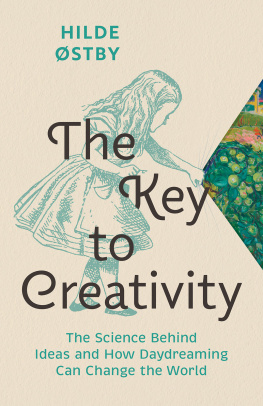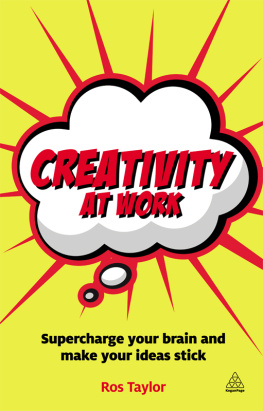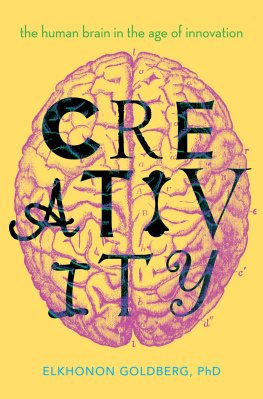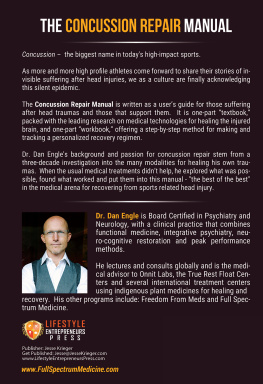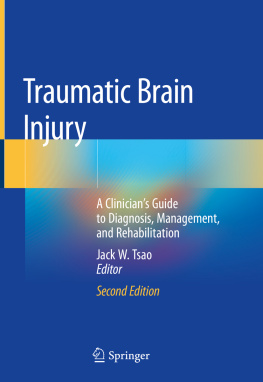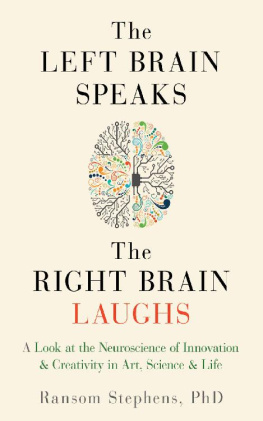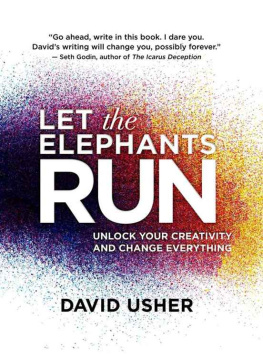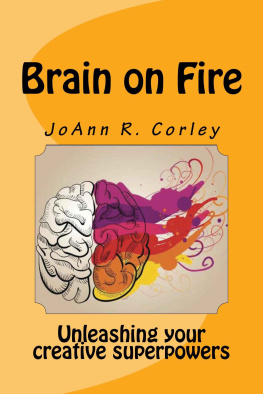Hilde Østby - The Key to Creativity: The Science Behind Ideas and How Daydreaming Can Change the World
Here you can read online Hilde Østby - The Key to Creativity: The Science Behind Ideas and How Daydreaming Can Change the World full text of the book (entire story) in english for free. Download pdf and epub, get meaning, cover and reviews about this ebook. year: 2023, publisher: Greystone Books, genre: Science fiction. Description of the work, (preface) as well as reviews are available. Best literature library LitArk.com created for fans of good reading and offers a wide selection of genres:
Romance novel
Science fiction
Adventure
Detective
Science
History
Home and family
Prose
Art
Politics
Computer
Non-fiction
Religion
Business
Children
Humor
Choose a favorite category and find really read worthwhile books. Enjoy immersion in the world of imagination, feel the emotions of the characters or learn something new for yourself, make an fascinating discovery.
- Book:The Key to Creativity: The Science Behind Ideas and How Daydreaming Can Change the World
- Author:
- Publisher:Greystone Books
- Genre:
- Year:2023
- Rating:5 / 5
- Favourites:Add to favourites
- Your mark:
The Key to Creativity: The Science Behind Ideas and How Daydreaming Can Change the World: summary, description and annotation
We offer to read an annotation, description, summary or preface (depends on what the author of the book "The Key to Creativity: The Science Behind Ideas and How Daydreaming Can Change the World" wrote himself). If you haven't found the necessary information about the book — write in the comments, we will try to find it.
Readers of Susan Cains Quiet and Daniel Pinks When will appreciate this passionate investigation into creativity and the human brainfrom the perspective of an author investigating her own brain after a concussion.
Author and journalist Hilde stby was cycling to work one day when she crashed head-first into a stone bridge. At the hospital, she was diagnosed with a traumatic brain injury and prescribed rest and relaxation. But her brain was anything but restful: ideas for new writing projects popped into her head at a frenzied pace. Never before had she had so many aha moments. But at the same time, simple tasks like walking through an airport felt impossible. Had the concussion made herlike the stereotype of the tortured artistmore creative but less able to function in society? Or was there something else at play? What makes a person creative, anyway?
In The Key to Creativity, stby takes readers on a deep-dive into why we are creative and what conditions must be present in order for us to make our best work: whether that be a painting, a piece of writing, or simply a good email. Using characters from Alice in Wonderlandfor inspiration, stby investigates why we have ideas that seemingly come out of nowhere, like the Cheshire Cat, and how we can quiet our inner critic, like the rule-obsessed Queen of Hearts. Along the way, she speaks with artists of all stripes and interviews psychiatrists and neurologists who specialize in understanding what happens in the brain when we are at our most creative. She discovers that having a tortured and lonely existence isnt necessarily conducive to producing great artand that being able to complete a task, on time, and according to your and others expectations, is as important as being able to think outside the box.
stby soon learns that she needs to make changes in her own life to recover from her brain injury and to give structure and life to her ideas. This engaging and groundbreaking book debunks the myth that you need to be a genius in order to be an artist or inventor. All you need is an idea and the tools to make your creative dream come true.
Hilde Østby: author's other books
Who wrote The Key to Creativity: The Science Behind Ideas and How Daydreaming Can Change the World? Find out the surname, the name of the author of the book and a list of all author's works by series.

